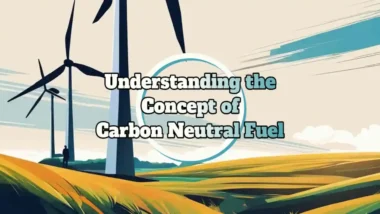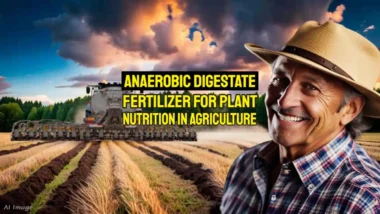Many people ask, is biogas renewable? It is mostly methane (a severe greenhouse gas) and when it is burned, it creates carbon dioxide (the gas we are told is the main culprit behind climate change!).
So, isn't the truth behind its sustainability that the whole idea of renewable biogas is pure greenwash?
Read on to find out why the reply is a definite no! But we agree that it would be easy to doubt it on first thoughts.
[boomdevs_toc]
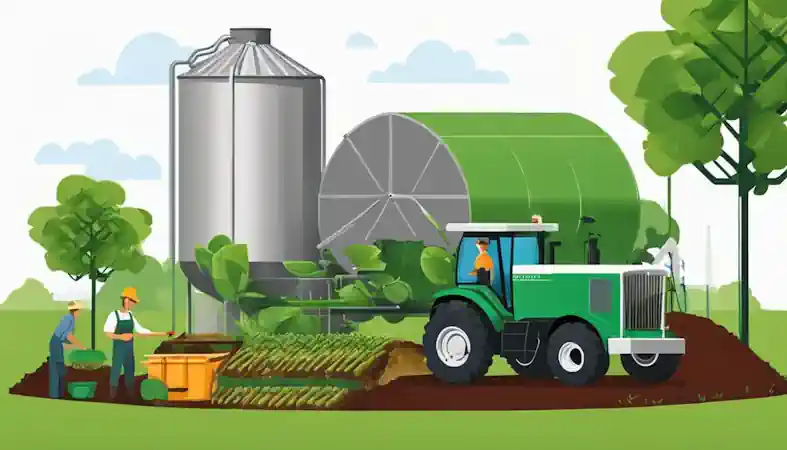
Biogas is a type of energy made from things like leftover food and animal poo. People say it's renewable because we can keep making more as long as we have this kind of waste. Biomethane comes from biogas after cleaning out the bad stuff, and it's also “renewable” and even cleaner.
Tiny microbes in special places called digester tanks in anaerobic digestion plants are instrumental in turning this waste into useful gas.
Some folks think that using biogas is great for our planet, but others are not so sure. They worry about hidden uses of old-school fuels in making and moving biogas around. Also, when you take a closer look, you might find methane gases leaking where they shouldn't. And, during biomethane processing, there may be methane leaking into the atmosphere too.
But there is no denying that in places like Pakistan, people use biogas to cook their meals, which shows how helpful it can be to even the poorest nations.
But there are other problems raised too, like how these gas systems might possibly, in some way, negatively affect farmers living in the countryside. They can be smelly when run badly, of course, but nobody can credibly suggest that a “natural” digester pong ever made a farmer badly ill.
This article will talk all about whether biogas really is as good for our planet as some people say it is—and what we could do better. Ready? Let’s dig deeper!
Is Biogas Renewable? Key Takeaways
- Biogas is made from organic waste like food scraps and manure. It can help fight climate change because it's a renewable source of energy.
- Sometimes making biogas uses non-renewable energy, like diesel or natural gas. This makes people wonder if it's really sustainable.
- Farms use tractors that run on fossil fuels to move materials for biogas. If these tractors used clean energy instead, biogas would be greener.
- Cold places need extra heat for biogas plants, which often comes from burning fossil fuels. Finding new ways to keep these plants warm could improve their sustainability.
- Biogas has issues around fairness too. Rural areas and farmers sometimes don't get enough support for running their biogas plants, raising environmental justice concerns.
Understanding Biogas and Biomethane
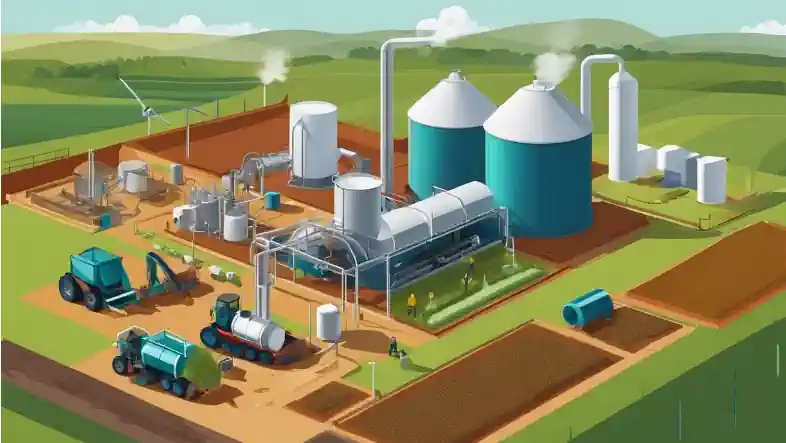
Biogas and biomethane are forms of renewable energy that are produced through the anaerobic digestion of organic materials such as food waste, sewage sludge, and livestock waste. The production process involves capturing methane emissions from these materials and converting them into usable energy sources for heating, electricity generation, or vehicle fuel.
Definition of Renewable Energy
Renewable energy comes from natural sources that never run out. The sun, wind, and water are examples of these endless supplies. Plants grow back, and waste like food scraps can always be turned into power again.
Unlike coal or oil, we won't ever use up renewable energy. It keeps our lights on and cars running without harming the planet directly at all.
This type of energy also helps fight climate change by releasing natural carbon dioxide into the air, as opposed to non-replaceable carbon dioxide from prehistoric reserves back in the day when its removal created the life-giving atmosphere we know today.
The most important fact, though, is that the carbon dioxide emitted from burning biogas and biomethane is simply part of the planet's “carbon cycle” of birth or germination, life or growth, death, and decay.
This is important to understand because biogas is a key player in the green movement. It's been doing its thing since life on Earth began. The fact is that it is made when organic material breaks down without oxygen around, and therefore it is certain it was being made so early in the evolution of this planet that it is possibly the very first organic compound ever to be made.
When used in the right way, biogas can't help but cut down harmful greenhouse gas emissions.
Biomethane then steps up the game by being even cleaner; it's nearly pure methane produced from biogas but with impurities taken out for safer use.
How the Carbon Cycle Works
Understanding how biogas comes from renewable sources means looking at the carbon cycle. Plants pull carbon dioxide (CO2) out of the air to grow. Animals eat plants and release CO2 back into the air when they breathe or decompose.
In short, the carbon cycle is nature's way of reusing carbon atoms, which travel from the atmosphere into organisms on Earth and then back into the atmosphere over time.
This continuous loop really gets exciting when we bring in anaerobic digesters. These are big tanks where microorganisms break down organic waste without oxygen around. Here, food scraps, animal manure, and other biowastes become biogas rich in methane (CH4).
Methane can be burned to make heat and electricity or upgraded to biomethane for fuel. This happens with minimal oxygen involved, so it mimics natural processes like those in wetlands or cow stomachs!
Definition and production process of biogas
After learning how the carbon cycle works, let's dive into biogas and its creation. Biogas is a renewable fuel made from organic matter breaking down without oxygen. This process happens in biogas plants known as anaerobic digestion (AD) facilities.
Here, microbes feed on organic waste like food scraps, manure, or plant material.
The AD process begins with feeding waste into a digester tank, where it's heated to speed up microbial activity. These microbes munch through the waste and give off gases, primarily methane and carbon dioxide, with traces of other substances.
Farmers often use this methane-rich biogas as a source of energy or to produce electricity and heat through combined heat and power systems. The leftover material can fertilise soils, closing the loop in a circular economy ideal for farm management practices and reducing their carbon footprint.

Upgrading biogas to biomethane
Turning biogas into biomethane takes our renewable gas game to the next level. This mature technology is key for slashing emissions from our energy systems. We take raw biogas, packed with potential, and put it through a cleaning process.
Membrane filters or other purifying technologies strip out unwanted substances like hydrogen sulphide and carbon dioxide.
The result? Clean-burning biomethane that's ready to power homes or fuel vehicles, just like natural gas from underground. Systems for purifying biogas use methods like membrane separation to get high-quality renewable natural gas—biomethane—that can flow right into the existing natural gas grid without a hitch.
It's resource recovery at its finest, taking what we used to see as waste and transforming it into something valuable again.
Hidden Fossil Fuel Consumption During the Production and Use of Biogas
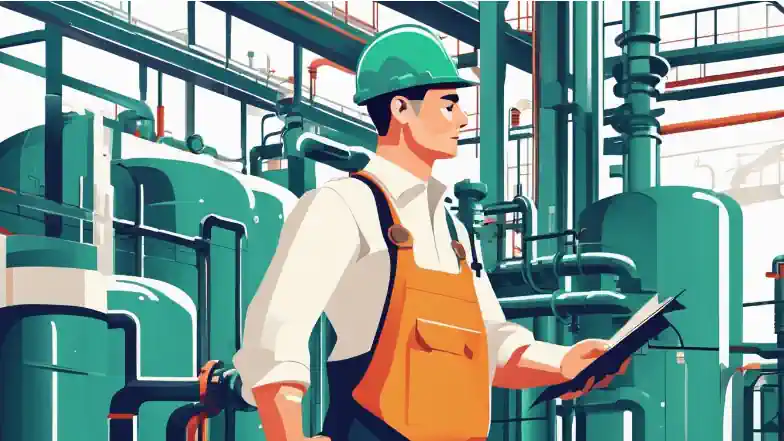
Many people believe that biogas is a truly renewable energy source, but there are usually hidden fossil fuel consumptions during its production and use that may challenge this notion.
To uncover the truth behind the sustainability of biogas, let's delve deeper into its production process and environmental impact.
Read on to uncover the reality behind biogas and make an informed decision about its renewable status.
Fossil Fuel Used to Run the Anaerobic Digestion Process
Creating biogas through anaerobic digestion needs energy. Sometimes, this energy comes from burning fossil fuels. We use these fuels to control the temperature and mix materials inside biodigesters. This control of the temperature to keep the digester tank warm is important because bacteria work best under really warm, even hot, conditions to break down waste into biogas.
Even though we call biogas a ‘green' fuel, it relies on non-renewable energy at times during its production. This makes some people question how renewable and sustainable it really is.
When a biogas plant is on a farm, it will need to be fed its biowaste, and until biomethane-powered tractors become commonplace diesel-powered tractors consume fossil fuel to make it. However, biogas experts confidently predict that in the next 10 years of transition, alternative fuels will be used for farm machinery including battery electric power using the output from the digester.
If fossil fuels are part of making biogas, the biogas plant operators will be the first to think about ways to cut that out, because using their own fuel is much the cheapest for them. Only then can biogas become as carbon-negative as possible, but even now it is a true friend of the environment.
Use of Non-renewable Fuel to Run Biogas Plant Farm Tractors
Farm tractors at biogas plants often rely on diesel, a non-renewable fuel. This creates a paradox in the system. We want to make energy that is clean and green, but we're using dirty fuels to get there.
Tractors play a huge role in moving raw materials like crop residues and organic waste around the plant.
Hidden fossil fuel use pops up here, showing that biogas isn't all about renewables. Even as tractors help produce renewable gas, they release CO2 into the air. Biogas could be cleaner if these farm machines switched to low-emission alternatives.
That could mean electric tractors or those running on the very biogas produced at the plant!
Consumption of Fuel to heat Biogas Plants in Cold Climates
Heating biogas plants in cold climates needs extra fuel. This often means burning fossil fuels like natural gas or diesel. It's a tricky thing because, while we aim for renewable energy, we sometimes rely on non-renewable resources to keep the process going.
Keeping the digesters warm is crucial; otherwise, the bacteria that break down waste won’t work well.
Biogas plants are designed to capture methane and use it as fuel, which helps reduce greenhouse gases. But in colder areas, the reality hits hard—they need a helping hand from traditional fuels to maintain efficiency.
The balance between sustainability and practicality is delicate here, highlighting an area where innovation could lead us closer to true renewable energy production.
Is Biogas Truly Renewable?
While biogas is often hailed as a renewable energy source due to its organic waste origins, there are criticisms regarding its actual sustainability. The debate over whether biogas should be classified as truly renewable stems from the hidden fossil fuel consumption and environmental justice issues surrounding its production and use.

Arguments for biogas as a renewable energy source
- Biogas is derived from the breakdown of organic materials, such as food scraps and agricultural waste.
- It contributes to reducing greenhouse gas emissions and dependence on non-renewable energy sources.
- The production of biogas promotes efficient waste management, turning organic matter into a valuable energy resource.
- It offers a sustainable alternative for clean cooking and electricity production in both developed and developing countries.
- Biogas aids in decarbonising the energy sector by providing a renewable natural gas option.
- Its production supports nutrient recycling, contributing to environmental sustainability.
- Biogas can be upgraded to biomethane for use as a fuel in vehicles and other applications, further expanding its potential impact.
Criticisms of biogas sustainability
Biogas has been marketed as renewable and eco-friendly, but criticism exists.
- Hidden Fossil Fuel Consumption During Production and Use of Biogas
- The anaerobic digestion process requires fossil fuels for operation.
- Non-renewable fuels power biogas plant farm tractors.
- Fuel consumption heats biogas plants in cold climates.
2. Arguments for Biogas as a Renewable Energy Source
- Classified as a form of renewable energy, unlike natural gas which is a mined mineral, use it and it will be gone.
- Seen as an eco-friendly and alternative fuel option.
3. Environmental justice Issues surrounding biogas production—that's mostly a minor concern. Meanwhile is biogas renewable is a thing that can't be much influenced
- Impact on rural communities and farming practices is concerning.
- Lack of government policy support raises questions about equity.
Environmental Justice Issues Surrounding Biogas
– Impact on rural communities and farming practices, as well as the lack of support from government policies, raises concerns about environmental justice surrounding the production and use of biogas.
Impact on rural communities and farming practices
Biogas production impacts rural communities and farming practices. The use of biogas systems can be a potential solution for providing renewable energy in areas with limited access to reliable power sources, often improving the resilience of poor local regions.
However, current national and state policies fail to support sustainable farming practices related to biogas production. This contributes to injustices and does nothing to safeguard these communities from the potential harm that large-scale factory farming with biogas systems might cause. Additionally, government policies lack adequate support for sustainable farming practices linked to biogas utilisation.
As a result, it's crucial to address these disparities through more comprehensive policy frameworks that prioritise both renewable energy generation and sustainable agricultural methods while actively involving local communities as key stakeholders in shaping these initiatives.

Lack of support from government policies
Government policies play a crucial role in shaping the sustainable energy landscape, yet the lack of adequate support surrounding UK biogas has raised concerns about its true economic sustainability as a revenue source for this renewable energy source.
The absence of government support for biogas highlights significant gaps that need urgent attention to allow for the full development of the technology throughout the UK.
Recommendations and Conclusion
Is biogas truly renewable? Unveiling the truth behind its sustainability, yes. It truly is renewable!
The UK Anaerobic Digestion & Bioresources Association regularly re-assesses the key features and mechanisms of biogas production and continues to emphasize its contribution to sustainable energy goals based on scientific principles.
Providing practical advice, we recommend integrating biogas into agriculture for waste management and energy production as an effective way to utilize this renewable resource.
When evaluating the pros and cons, consider the importance of the many environmental benefits alongside potential drawbacks when deciding on using biogas as a renewable fuel source.
In our final verdict, we highlight that, while challenges exist, if biogas production is managed ethically and practically, biogas is a renewable energy that can play a vital role in decarbonising our energy systems.
FAQs
1. What exactly is biogas and how sustainable is it?
Biogas comes from breaking down organic materials, like food waste or manure, in a digester. Because we constantly make waste, this creates a renewable source of power known as biogas power.
2. Can using biogas help with our energy security?
Absolutely! By turning to local resources—think cattle farms and landfills—for making biogas through processes like combined heat and power (CHP), we're not relying on uncertain outside supplies that much.
3. Do wastewater treatment plants have any role in creating renewable natural gas (RNG)?
Yes, indeed! Wastewater treatment plants can turn sludge into valuable RNG or syngas by using microbes in an anaerobic digestion process—talk about clever recycling!
4. Is there more than one use for the stuff left after producing biogas?
You bet that once the energy's been squeezed out of your leftovers, what remains can be turned into organic fertilizer, which then helps grow energy crops.
5. Does switching to biogas mean less air pollution?
It sure does; swapping out fossil fuels for compressed natural gas from biogas significantly cuts back on nasty emissions such as CO2 (carbon dioxide) and reduces air pollution.
6. When they say ‘biogas upgrading', what are they talking about?
That's all about cleaning up the raw biogas by removing impurities like hydrogen sulphide (H2S). This purification makes sure it's top-notch quality before getting turned into fuel for engines and fuel cells.




